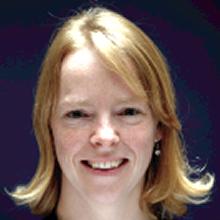Complex-network analysis of river channel networks
Complexity studentships. Earth Surface Dynamics
Supervisor: Prof. Paul Carling and Prof. Pete Atkinson
Funding source:
Complexity studentship
(4 years)
The Problem
Not all river channels are composed of single threads. Many river channels are composed of multiple channels forming complex braid patterns. Each braid section consists of short single channels and of given orientation with connection ‘nodes’ at channel junctions. The number of channels making up the network can vary as can the link lengths, the angles of bifurcations and confluence junctions. The widths and depths of the links can vary as can the size, shape and orientation of the intervening islands of land between channels.
The strength of flow in each link can vary and the geometry of each link provides varying degrees of friction opposing the flow. As river level rises and falls the channel geometric properties can change. For example, the number of links may increase as formerly dry ones are wetted or links may be submerged such that the apparent number of links is reduced. In a similar manner, river channels change their spatial arrangement through time such that network characteristics might also change through time. Different rivers have different channel network geometries.
In the past, relatively few and simple indices have been developed by geoscientists to describe such networks which are not adequate to describe the complexity nor sensitive enough to discriminate changes through time or to compare different river systems. Recently, there has been an emerging interest in the river science community to develop improved indices, but those available remain relatively unsophisticated. Thus, there is potential to make significant advances and impact in the description and utilization of river channel network indices to both describe networks both in detail and robustly, such as to ascertain river behaviour and characterise system performance.
The hypothesis: The hydraulic behaviour of river networks, such as efficiency in passing a given discharge, can be measured and understood through complex network measures.
The solution
Complexity network analysis is a new multidisciplinary approach to the study of complex systems – which aims to characterise complex networks with the minimum number of physically interpretable measures required to define the system. For example, indices have been developed for brain connectivity data sets with measures of nodes, links, etc. leading to definition of system segregation, integration, transitivity, connectivity and centrality. Some of these metrics are analogous to river discharge capacity and channel roughness, for example. However, such indices are relatively under-developed for complex river systems such as braided and anabranching channels, and certainly have not been applied to such systems. The development of a suite of complex network metrics would allow river systems to be compared robustly, but also parsimoniously. In addition, developing indices which relate directly to river function, such as discharge capacity and roughness would shed light on how functionality of water conveyance is maintained as system geometries are varied.
Training element
The student would be provided with an induction into river hydraulics including understanding of how river networks evolve through time and the different classification systems that currently describe different kinds of river network. The planview of networks would require extraction from satellite sensor images and initial manipulation in a GIS framework such as ArcGIS. Existing network tool boxes are often written in Matlab (e.g.
https://sites.google.com/a/brain-connectivity-toolbox.net/bct/Home
and Python so that the student would need to be mathematically
competent (including managing matrices), be able to pre-process data via thresholding etc., and able to develop and compute new metrics and visualise the outputs. Statistical competence is required, but additional training can be provided.
Candidates must have or expect to gain a first or strong upper second class degree, in an appropriate discipline, not necessarily Geography. Details on how to apply are available from Julie Drewitt, Graduate School Administrator, School of Geography University of Southampton, SO17 1BJ, Telephone 023 8059 2216, email J.A.Drewitt@soton.ac.uk . Informal enquiries may be made to Prof Paul Carling (email p.a.carling@soton.ac.uk ).
For further details on how to apply direct to the ICSS please see
http://www.icss.soton.ac.uk/
What's related
Links to external websites
The University cannot accept responsibility for external websites.
